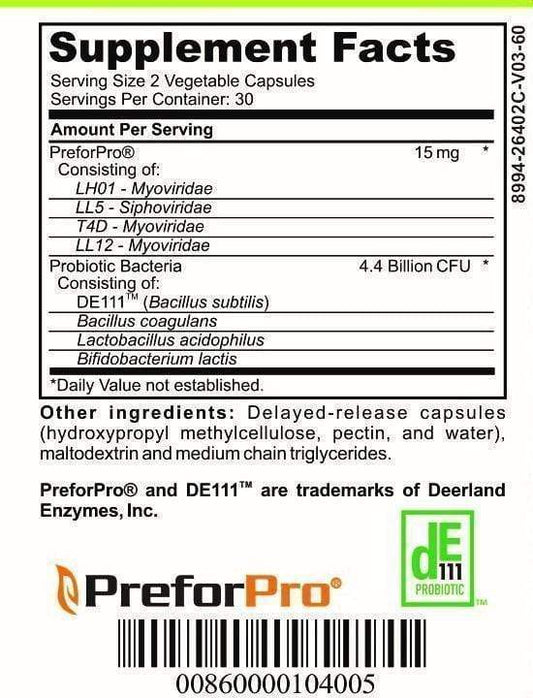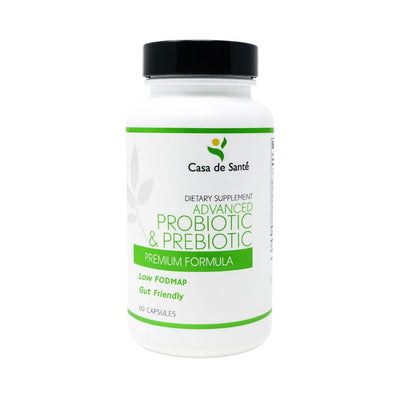Exploring Polyols Foods: A Guide to Low FODMAP Options for Better Digestion
This article delves into the world of polyols foods and how they fit into a low FODMAP diet. Polyols are a type of carbohydrate found in various foods, and understanding them can help improve digestion for those with sensitivities. This guide provides insights into polyols, their benefits, and practical tips for incorporating them into your meals.
Key Takeaways
- Polyols are sugar alcohols that can be hard to digest for some people.
- Low FODMAP diets can help reduce digestive discomfort by limiting high-polyol foods.
- Reading food labels is essential to identify polyols in processed foods.
- Cooking with low FODMAP ingredients can lead to delicious, gut-friendly meals.
- Shopping smart can help find low FODMAP polyols foods without breaking the bank.
Understanding Polyols in Foods
What Are Polyols?
Polyols, often known as sugar alcohols, are a type of carbohydrate that our bodies can only digest partially. They are sweeteners that can be found in many foods. Common examples include sorbitol, mannitol, and xylitol. These compounds are naturally present in some fruits and vegetables, and they are also used in many sugar-free products.
Common Sources of Polyols
Polyols can be found in various foods, including:
- Fruits: apples, pears, and cherries
- Vegetables: cauliflower and mushrooms
- Sweeteners: sorbitol and xylitol
Polyols and Their Role in Digestion
Polyols can affect digestion in different ways. When consumed, they can draw water into the intestines, which may speed up digestion. However, for some people, especially those with sensitive digestive systems, this can lead to discomfort and gas.
Understanding how polyols work can help you make better food choices for your digestive health.
Benefits of Low FODMAP Diets
How Low FODMAP Diets Aid Digestion
Following a low FODMAP diet can help many people with digestive issues, especially those with irritable bowel syndrome (IBS). This diet can lead to less discomfort and better digestion. Here are some key benefits:
- Reduced Gas: High-FODMAP foods can create gas in the gut, leading to discomfort. Avoiding these foods can help reduce gas.
- Less Bloating: Many people feel bloated after eating high-FODMAP foods. A low FODMAP diet can help ease this feeling.
- Better Bowel Movements: This diet can help regulate bowel habits, making it easier to avoid diarrhea or constipation.
Polyols Foods in Low FODMAP Diets
Polyols are a type of carbohydrate that can cause digestive issues for some people. Foods high in polyols include:
| Food Type | Examples |
|---|---|
| Fruits | Apples, Pears, Cherries |
| Vegetables | Cauliflower, Mushrooms |
| Sweeteners | Sorbitol, Mannitol |
By limiting these foods, individuals may find relief from symptoms.
Success Stories from Low FODMAP Dieters
Many people have shared their positive experiences with the low FODMAP diet. Here are a few common themes:
- Improved Energy Levels: With less digestive discomfort, many feel more energetic.
- Better Mood: Reducing digestive issues can lead to less stress and anxiety.
- Increased Food Variety: Once trigger foods are identified, people can enjoy a wider range of foods without discomfort.
The low FODMAP diet is not meant to be permanent. It’s a tool to help identify foods that cause problems and improve overall digestive health.
Identifying Polyols in Everyday Foods
Reading Food Labels for Polyols
When shopping for food, it's important to check the labels for polyols. Here are some tips:
- Look for ingredients like sorbitol, mannitol, xylitol, and maltitol.
- Check for sugar-free or low-calorie products, as they often contain polyols.
- Be cautious with products labeled as "sugar-free"; they may still cause digestive issues.
Polyols in Fruits and Vegetables
Certain fruits and vegetables naturally contain polyols. Here’s a quick list:
- High Polyol Fruits: Apples, pears, cherries, and plums.
- Moderate Polyol Vegetables: Cauliflower, mushrooms, and snow peas.
- Low Polyol Options: Bananas, blueberries, and carrots.
| Food Type | High Polyols | Moderate Polyols | Low Polyols |
|---|---|---|---|
| Fruits | Apples | Cherries | Bananas |
| Vegetables | Cauliflower | Mushrooms | Carrots |
Hidden Polyols in Processed Foods
Processed foods can contain hidden polyols. Here are some common sources:
- Sugar-free candies and gums.
- Diet drinks and sweeteners.
- Packaged snacks labeled as low-calorie.
Understanding what polyols are in your food can help you make better choices for your digestion. A nutrition assessment can also guide you in identifying foods that may cause discomfort.
Cooking with Polyols Foods
Low FODMAP Recipes with Polyols
Cooking with polyols can be fun and delicious! Here are some easy recipes to try:
- Chocolate Avocado Mousse: Blend ripe avocados with cocoa powder and a low FODMAP sweetener like erythritol.
- Zucchini Noodles with Pesto: Use spiralized zucchini and mix with a homemade basil pesto, avoiding garlic.
- Berry Smoothie: Blend low FODMAP fruits like strawberries and blueberries with almond milk for a refreshing drink.
Substituting Ingredients for Better Digestion
When cooking, you can swap out high FODMAP ingredients for low FODMAP options:
-
Instead of: Garlic
- Use: Garlic-infused oil
-
Instead of: Wheat pasta
- Use: Rice or quinoa pasta
-
Instead of: Regular sweeteners
- Use: Stevia or monk fruit sweetener
Tips for Cooking Low FODMAP Meals
- Plan Ahead: Make a meal plan to avoid high FODMAP foods.
- Read Labels: Always check for hidden polyols in processed foods.
- Experiment: Try new recipes and ingredients to find what works best for you.
Cooking with polyols can help you enjoy tasty meals while managing your digestion. Experimenting with flavors and textures can lead to delightful discoveries!
Potential Side Effects of Polyols
Digestive Issues Linked to Polyols
Polyols can cause digestive problems for some people. These issues often include bloating, gas, and diarrhea. This happens because polyols are not fully absorbed in the small intestine, leading to fermentation in the gut. Here are some common symptoms:
- Bloating
- Gas
- Diarrhea
Managing Polyol Sensitivity
If you suspect you have a sensitivity to polyols, consider these steps:
- Keep a food diary to track what you eat and any symptoms you experience.
- Gradually reduce polyol intake to see if symptoms improve.
- Consult a healthcare provider for personalized advice.
Consulting Healthcare Providers
It's important to talk to a healthcare provider if you experience severe digestive issues. They can help you determine if polyols are the cause and suggest appropriate dietary changes.
Remember, everyone's body reacts differently to polyols. Listening to your body and seeking professional guidance can help you manage your digestive health effectively.
Shopping for Low FODMAP Polyols Foods
Best Places to Buy Low FODMAP Foods
When looking for low FODMAP foods, consider these options:
- Health food stores: They often have a variety of low FODMAP products.
- Supermarkets: Many larger supermarkets now carry gluten-free and low FODMAP items.
- Online retailers: Websites dedicated to health foods can provide a wide selection.
Budget-Friendly Low FODMAP Shopping
Shopping on a budget is possible with these tips:
- Buy in bulk: Purchase grains and nuts in larger quantities to save money.
- Look for sales: Keep an eye out for discounts on low FODMAP products.
- Plan meals: Create a shopping list based on your meal plan to avoid impulse buys.
Online Resources for Low FODMAP Products
There are many online resources to help you find low FODMAP foods:
- FODMAP apps: Use apps like the Monash University FODMAP app for food lists.
- Websites: Many health blogs provide lists of low FODMAP foods and recipes.
- Social media groups: Join online communities for tips and product recommendations.
Remember, always check labels for hidden FODMAPs in processed foods. This will help you maintain a healthy low FODMAP diet.
Incorporating Polyols Foods into Your Diet
Meal Planning with Polyols Foods
When planning meals with polyols, consider the following:
- Choose low FODMAP fruits like bananas, blueberries, and kiwi.
- Include vegetables such as carrots, spinach, and zucchini.
- Use sugar substitutes like erythritol or stevia instead of high FODMAP sweeteners.
Balancing Polyols with Other Nutrients
To maintain a balanced diet while incorporating polyols, remember to:
- Pair polyol-rich foods with protein sources like chicken or fish.
- Add healthy fats such as olive oil or avocado.
- Ensure you have fiber from low FODMAP grains like rice or quinoa.
Tracking Your Digestive Health
Monitoring how polyols affect your digestion is important. Here are some tips:
- Keep a food diary to note any symptoms after eating polyol-rich foods.
- Use a symptom tracker to identify patterns in your digestive health.
- Consult with a healthcare provider if you notice consistent discomfort.
Incorporating polyols into your diet can be beneficial, but it's essential to listen to your body and adjust accordingly.
Adding polyol foods to your meals can be a smart choice for your health. These foods can help with digestion and provide a sweet taste without too many calories. If you're curious about how to include them in your diet, visit our website for tips and recipes that make it easy!
Final Thoughts on Low FODMAP and Polyols
In conclusion, exploring low FODMAP foods, especially those containing polyols, can greatly help those with digestive issues. By choosing the right foods, you can enjoy meals without discomfort. Remember, it’s important to know which foods to avoid and which ones are safe. This guide offers a starting point for making better choices for your gut health. Always consider talking to a nutritionist for personalized advice. With the right approach, you can manage your symptoms and enjoy a balanced diet.
Frequently Asked Questions
What are polyols and where can I find them?
Polyols, also known as sugar alcohols, are a type of carbohydrate that our bodies can only partially digest. You can find them in certain fruits like apples and pears, as well as in sugar-free snacks and candies.
How do low FODMAP diets help with digestion?
Low FODMAP diets can help people with digestive issues like IBS by reducing foods that cause gas and bloating. This diet focuses on eating foods that are easier to digest.
What fruits are low in polyols?
Fruits that are low in polyols include bananas, blueberries, and strawberries. These fruits are safer for those following a low FODMAP diet.
Can I eat polyols if I have digestive problems?
It depends on your sensitivity. Some people can tolerate small amounts of polyols, while others may experience digestive discomfort. It's best to monitor your reactions.
Are there any side effects of eating polyols?
Yes, consuming too many polyols can lead to digestive issues like gas, bloating, and diarrhea. It's important to consume them in moderation.
Where can I find low FODMAP polyols foods?
You can find low FODMAP polyols foods at health food stores, supermarkets, and online. Look for products labeled as low FODMAP.




























